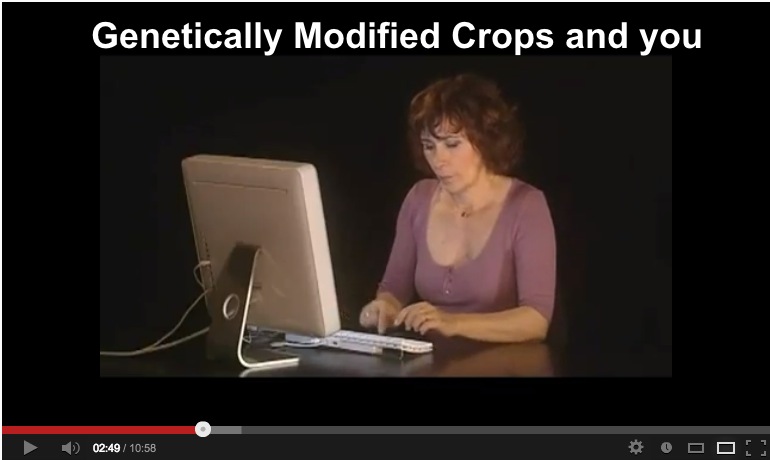I have to thank Dr. Debal Deb of Odisha, India, and the small farmers in the foothills of the Himalayas in the northeastern Indian province of Assam, for making it possible for me to meet up with so many remarkable organic farmers and anti-GMO activists in Comox Valley, Vancouver Island, British Columbia.
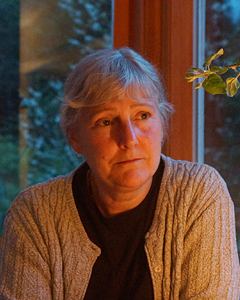
Peggy searched for Dr. Debal Deb from Odisha, India, and found me, from Delta, Canada instead.
If you want to know how someone in India whose last name seems like a truncated version of is first name, and small farmers of the foothills of Himalayas could possibly have any connection with Comox valley – you need to speak with Peggy Carswell and her NGO the Fertile Ground.
The thing is – she was searching for her friend Dr. Debal Deb on the internet, and found me, Debal’s friend, who had interviewed him over the phone and made a few videos about Debal’s views on GMO, sustainable farming and seed preservation. And thus, she found me. And how did Peggy Carswell of Comox Valley know Debal Deb of India? Thats another story, and you might have to ask Ms Pompy Ghosh of Assam, India, about it some day. But, let me not get any deeper into that, and try to refocus on the Comox Valley. Assam, and Pompy, and Peggy, and Debal Deb and others will get into my blog more in future, I believe. Meanwhile this blog is about people from an island off the west coast of Canada, standing up for the quality of our food, who should grow it, and how it should be grown.

Ellen Rainwalker
That was not all. There was also the matter of Ms Arzeena Hamir of the Amara Farm and Dr. Thierry Vrain and Chanchal of Innisfree Farm. If you are wondering who these people with strange names are – you need to visit Comox Valley some day. And if you like colourful, exotic names, you should also consider inviting yourself at one of the Comox Valley Food Round Table (CVFRT) meetings there. You might get to know wonderful ladies with names such as Ellen Rainwalker.
Okay, so what exactly is happening in Comox Valley? 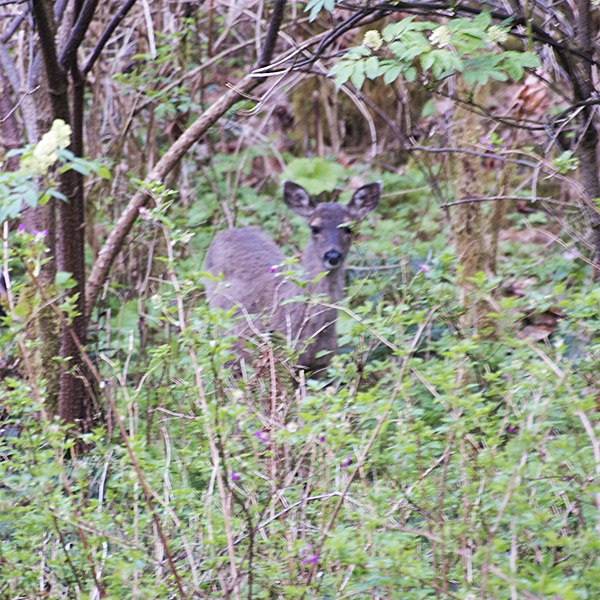 For one thing, a couple of yearling White tailed deer fawns following a very pregnant mother might be browsing outside your bedroom window in the morning. If they have not seen you before, or heard your strange accent, they might fix their large eyes on you and turn their large ears to catch your words, before arriving at the logical conclusion that you were neither much to look at, nor to listen to, before turning around with an air of supreme indifference and proceeding with their browsing. That was happening in the valley often enough around Railway avenue, the River Road, and another road called the Headquarter road. There is no Headquarter there. Not even a Tailquarter. But the name was relevant, I am told, because the valley once had an operating coal mine and a mining town around the area.
For one thing, a couple of yearling White tailed deer fawns following a very pregnant mother might be browsing outside your bedroom window in the morning. If they have not seen you before, or heard your strange accent, they might fix their large eyes on you and turn their large ears to catch your words, before arriving at the logical conclusion that you were neither much to look at, nor to listen to, before turning around with an air of supreme indifference and proceeding with their browsing. That was happening in the valley often enough around Railway avenue, the River Road, and another road called the Headquarter road. There is no Headquarter there. Not even a Tailquarter. But the name was relevant, I am told, because the valley once had an operating coal mine and a mining town around the area.
A couple of peacocks kept yelling at the world from across the woods. I never saw any during my stay, but heard them often enough, and was told that a nearby resident had a few, and allowed them sufficient free speech so they could announce their existence a few dozen times a day. There were also less noisy resident belted kingfishers, mallards, rufous hummingbirds, woodpeckers, warblers and other birds.
Among the humankind, Peggy and Kel kept us enchanted with their beautiful home and hospitality. I came away with the knowledge that the two of them had a larger heart than I could muster, not to mention Peggy was a great organizer when it came to supporting sustainable farming in Assam, India, and Kel was way better a handy man than me.
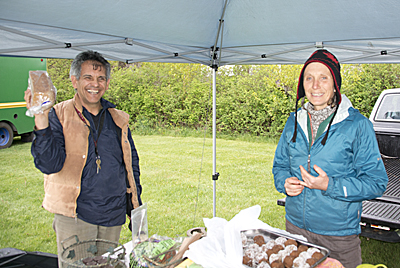
Eduardo, Ann, and edible hemp.
There are lots of other things happening in the community. For example, there is a vibrant weekend farmers market. I did meet a lot of folks there, and made video clips of them talking about their products and feelings on the issue of organic farming and clean food. Eduardo and Ann had a stall, and they were selling edibles made from hemp. I tried a round sweet with hemp seeds in it, that was the shape of an Indian laddu, a round ball slightly larger than a ping pong ball. It tasted sweet and great.
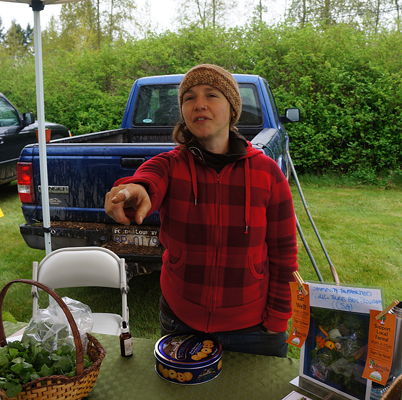
Moss at her stall
Then there was Ms Moss, a young organic farmer selling her wares. It was wonderful noticing younger generation getting in on organic farming and re-linking with the food web. She had samples of farm fresh vegetables and pamphlets that encouraged folks to support local farm produce. Peggy told me about her efforts and goals, and so I went and recorded her talking about her work. She thought my camera was awesome. I thought she was awesome.
There were lots of other great guys at the farmers market, and all of them deserve special mention. They, collectively, are our food preservers and seed savers, a profoundly important task, though they remain in the fringes of the urban media radar, and at the periphery of our social consciousness. This needs to change.
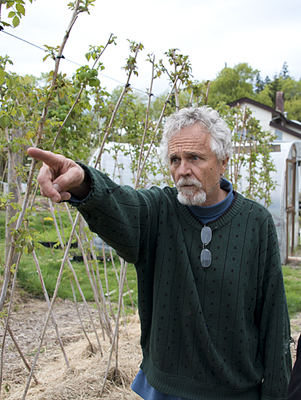
Is Thierry pointing to where GMO might belong – far away from our food chain?
I was fortunate to meet Dr. Thierry Vrain and Chanchal and interview them at their Innisfree farm. All that will come up shortly, on another blog, as well as in podcast and video. Meanwhile, I got a few shots of expressive Thierry. Here he might be pointing where GMO should be – far away, over the hills and across the oceans, preferably outside of the gravitational field of the planet earth, and out of our market, fridge and kitchen.
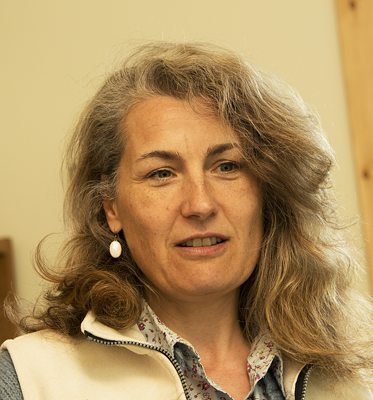
Chanchal Cabrera of Innisfree Farm
Chanchal Cabrera, despite her Indian sounding first name and Latin sounding last name, is a Scotswoman with finely chiselled features and mischievous eyes. She carries the last name from her previous marriage. But her first name was adopted by her, and given by a guru in India long ago. She had agreed to see me Sunday afternoon for an hour, and talked about her learning, her passion and her work with Growing Wellness, with herbal tea, vegetable and fruits, apothecary and culinary gardens and meditating labyrinth. She is a medical herbalist, a clinical aromatherapist, and a horticultural therapist among other things, and is connected with the Boucher Institute of Naturopathic Medicine in New Westminster, BC.
I had the good fortune to visit quite a few organic and original farms. one of them was Eatmore Sprouts of Ms Carmen Wakeling and interviewed her in the morning of Sunday, April 28th. She was gracious enough to take time out from her day of rest, to show me around and have a chat with me and be recorded. Her farm was amazing, but she too was very concerned about the GMO issue, and especially the GM alfalfa that was bearing down over the horizon. Her farm sold sprouts that was for human consumption.
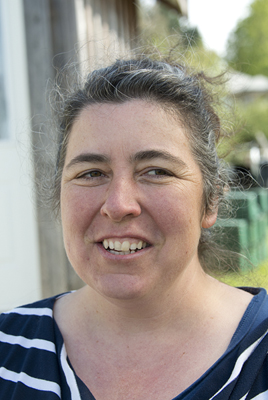
Carmen Wakeling of Eatmore Sprouts
She sells sprouted seeds, but her business model does not not leave room for her to save seeds for replanting. She therefore depended on importing non-GM organic seeds, and stood to lose both her source of seed, and her customers, if GM alfalfa was to contaminate naturally grown Alfalfa. She was also working with the large dairy farmers, who used GM corn to feed their cows and were the main opposition to turning the island free from GMO up and down the food web. Carmen had a progressive solution driven approach. She did not want to see the dairy farmers antagonized by fingers pointing at them. The idea was to find a solution by which all could exist, including dairy farmers, and without use of pesticides and genetically engineered ingredients in the cattle feed. A tall task, and something that perhaps needed the collective will and effort of everybody, including consumers, policy makers and investors. We all have our share of duty.
While I was sitting with her, a flock of blackbirds chased a Kestrel. She mentioned that a pair of American Kestrels were nesting on her property, and was the cause of much mobbing and chasing by smaller perching birds that considered the Kestrel an unwelcome intruder in their lives.
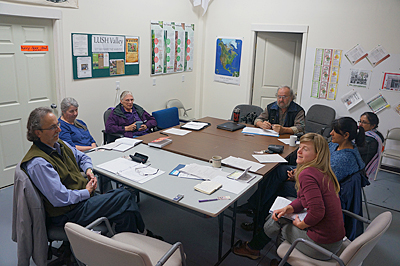
CVFRT meeting – April 29, 2013. Can you locate Ellen Rainwalker, who had the best name among us all?
Comox Valley Food Round Table (CVFRT) meeting for the Comox Valley citizens was an interesting event where I was allowed to sit in, record the proceedings, take a few pictures, and even put in my two cents here and there. I found it very encouraging, and something that others should also do if not already in it, to discuss various issues relating to supporting efforts to grow local, organic food, to raise awareness on it, and to join hands in collective efforts to resist takeover by corporate invested industrial farming with sprayed pesticides and GMO. I found it refreshing to sit with them, and thank them for allowing a rank outsider to listen in.
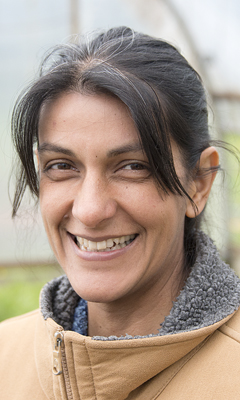
Arzeena Hamir of Amara Farm
The story of my visit to Comox Valley was to be bracketed by Peggy and Kel on one side, and with Arzeena Hamir of Amara farm on the other. A newcomer to the valley, she had a spanking new home that was heated by a combination of geothermal and solar energy. She was growing multiple kinds of vegetables, and leasing part of her land to UBC agricultural graduates to grow fruit trees. She and her busband where both agrologists that had worked around the world, and had vast experience and conviction on the value of good nutrition as well as rural grassroots level socio-economic development involving a model that included growing food that was chemical free and genetically untampered, non-industrial natural farming by small farmers, supported by their local communities. All this is going to come out in videos and podcasts. This is my first writeup, hurried as it is, within the first 24 hours since my return home from Comox valley.
I hope to be coming back to the valley again sometime, perhaps in the summer when things get more hectic. My parting words for the valley is – YOU ROCK.
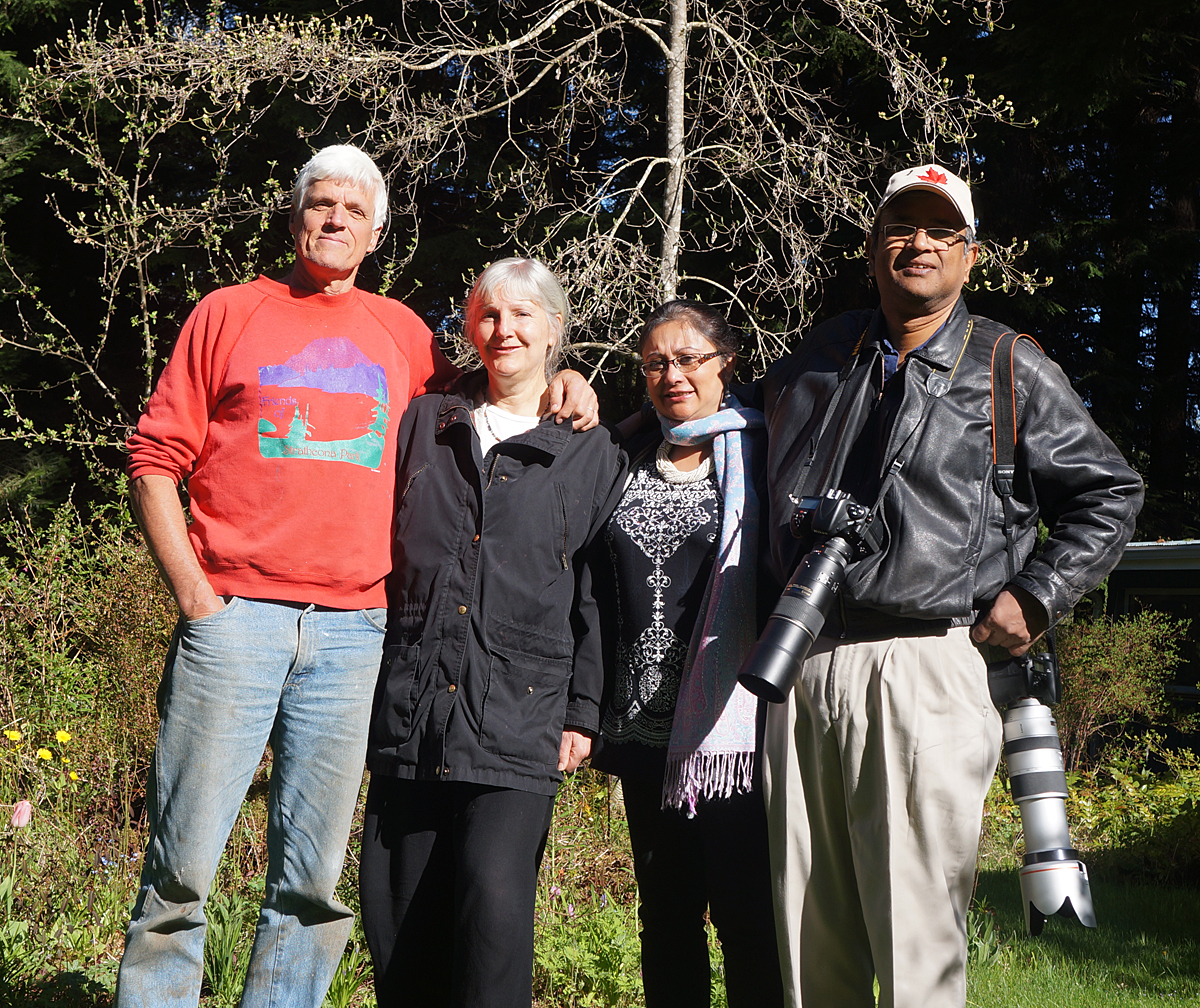
Kel, Peggy, Anu and yours truely
 The last one, part 4, was about GMO and the health risk it might carry.
The last one, part 4, was about GMO and the health risk it might carry.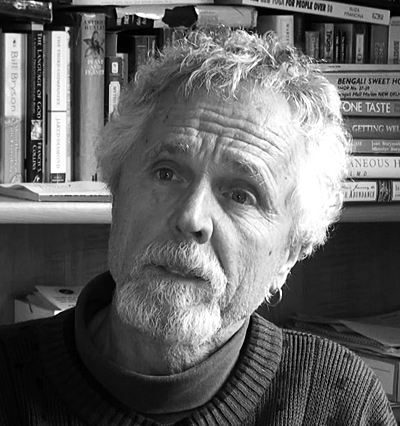



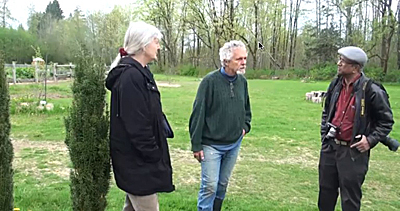








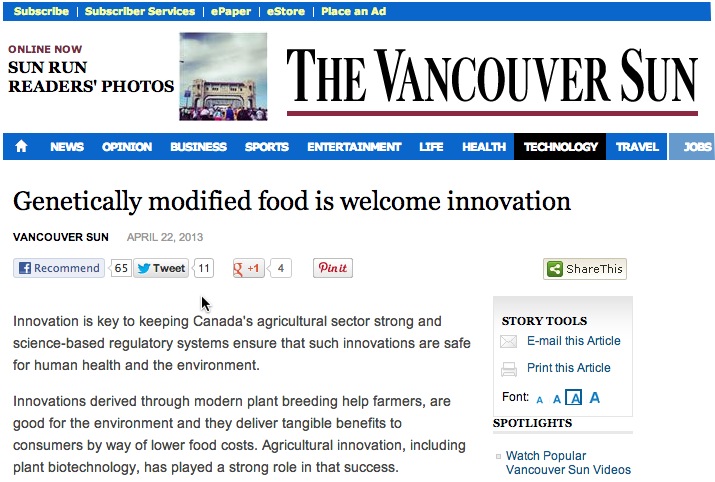


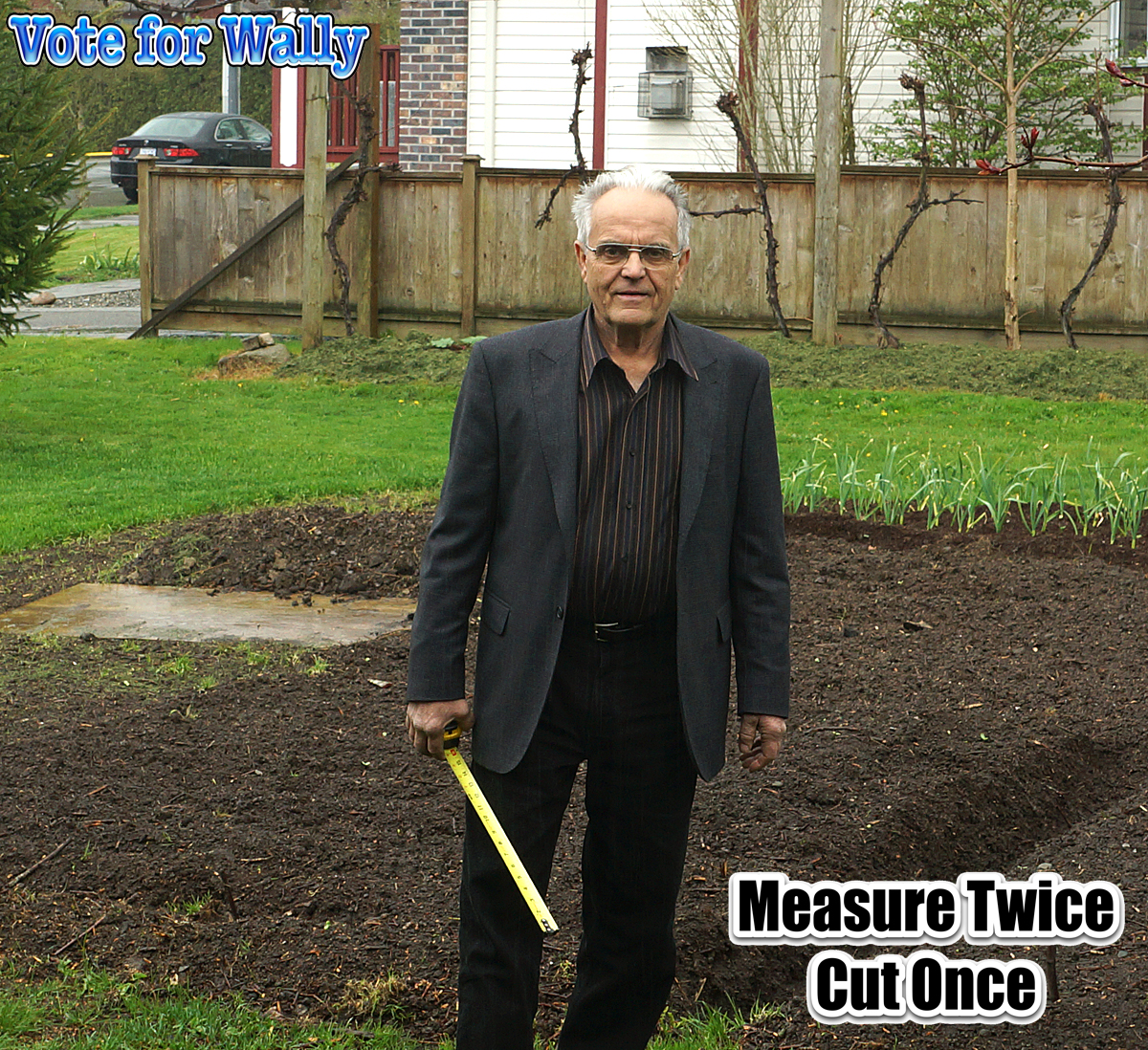
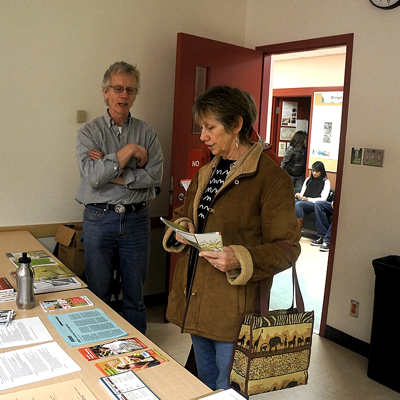


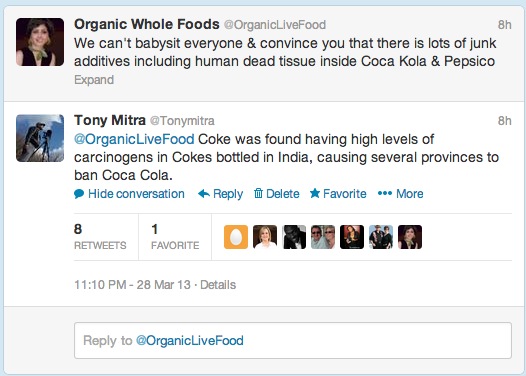

 I-522 is a citizens’ ballot initiative, written to protect consumers, not industry.
I-522 is a citizens’ ballot initiative, written to protect consumers, not industry.